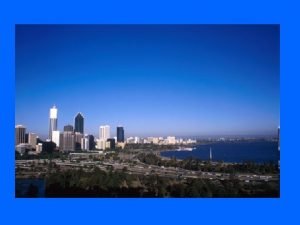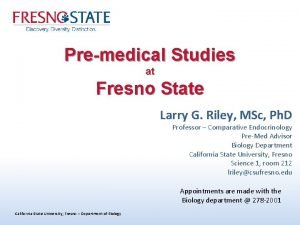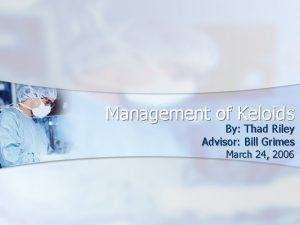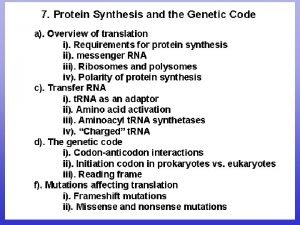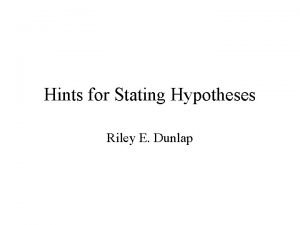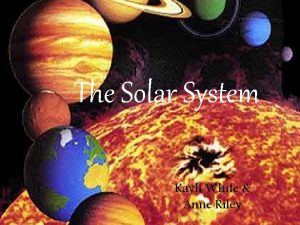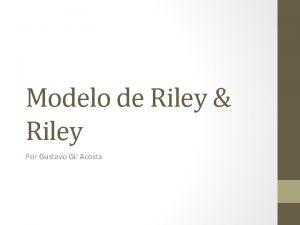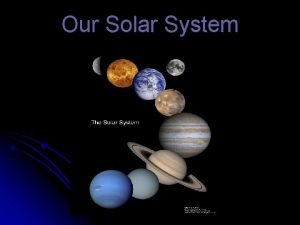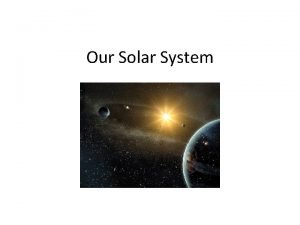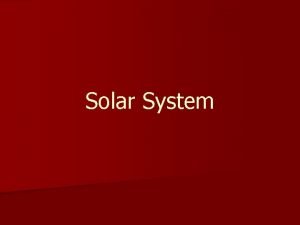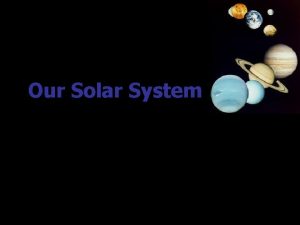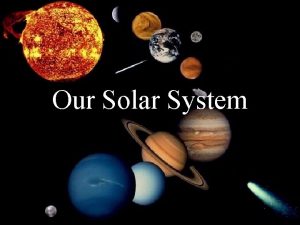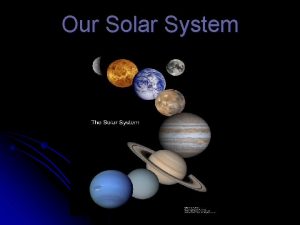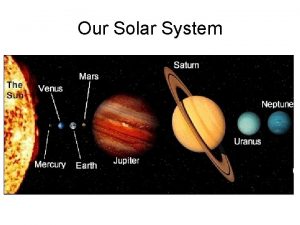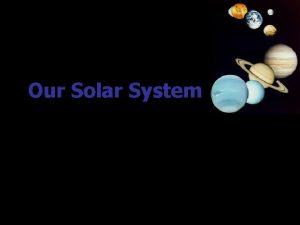The Solar System Kayli White Anne Riley The

















- Slides: 17

The Solar System Kayli White & Anne Riley


The inner planets vs. the outer planets • The inner planets: Mercury, Venus, Earth, and Mars. They are relatively small, composed mostly of rock, and have few or no moons. • The outer planets: Jupiter, Saturn, Uranus, Neptune, and Pluto. They are huge, mostly gaseous, ringed, and have many moons The exception is Pluto, the dwarf planet, which is small, rocky, and has one large moon plus two tiny ones.

Temperatures of the Planets • Generally, the farther from the Sun, the cooler the planet. Differences occur when the greenhouse effect warms a planet (like Venus) surrounded by a thick atmosphere.

Density of the Planets • The outer, gaseous planets are much less dense than the inner, rocky planets. • The Earth is the densest planet. • Saturn is the least dense planet; it would float on water.

A day on the Planets Compared to Earth • A day is the length of time that it takes a planet to rotate on its axis (360°). A day on Earth takes almost 24 hours. The planet with the longest day is Venus. A day on Venus takes 243 Earth days. (A day on Venus is longer than its year; a year on Venus takes only 224. 7 Earth days) The planet with the shortest day is Jupiter. A day on Jupiter only takes 9. 8 Earth hours.


Mercury • Planet closest to the Sun • Has no moons • Dry, nearly airless, and full of craters • Much like our moon • Mercury's core is 75% of Mercury by volume and 80% of it by mass

Venus • Second planet closest to the Sun • Has no moons • Atmosphere is 97% carbon dioxide • It’s surface temperature is 480 °C (896 °F)

Earth • Third planet from the Sun • Has one moon • Only planet capable of sustaining life • Three distinct layers. The core is the central part made up of molten nickel and iron. • The next layer is the mantle consisting of solid, hot rock. • The crust upon which we walk and live is the uppermost layer, consisting of soil, clay, and fine rock.

Mars • Fourth planet from the Sun • Has 2 moons • Has a reddish color due to the iron oxide (rust) that is in the soil • Has the largest volcano • Most Earth-like planet and may one day habitat humans

Jupiter • Fifth planet from the Sun • Has 18 large moons and many small ones • About 1, 320 Earths could fit inside of it • Has faint ring system • Great Red Spot: gigantic storm on Jupiter’s surface

Saturn • Sixth planet from the Sun • Has 18 large moons and many small ones • Gas giant composed of hydrogen, with small proportions of helium. • Has rings consisting mostly of ice particles • Least dense planet

Uranus • Seventh planet from the Sun • Has 15 moons • First planet to be discovered • Has a system of about 11 rings • Atmosphere composed of hydrogen, helium, methane, and ammonia

Neptune • Eighth planet from the sun • Has 2 moons • Atmosphere composed of hydrogen, helium, methane, and ammonia • Uranus’ twin • Great Dark Spot: (left) a depression in the atmosphere surrounded by high cirrus clouds

Pluto • Farthest planet from the Sun • Has 1 large and 2 small moons • Considered a dwarf planet • Small, rocky

Space Probes • A space vehicle carrying • Unlike an artificial sophisticated satellite, which is placed instrumentation but no in a permanent orbit crew around the earth, a space probe is launched with • Goes around planets enough energy to escape collecting information and the gravitational field of pictures to help scientist the earth and navigate understand the weather among the planets. and changes that planets • Many do not return back go through to Earth
 Panoptisizm
Panoptisizm Wholesale solar cell
Wholesale solar cell What is an inexhaustible source of energy
What is an inexhaustible source of energy White queen anne hathaway
White queen anne hathaway What is a nonsense poem
What is a nonsense poem Ellen g. white henry nichols white
Ellen g. white henry nichols white Riley rink
Riley rink Riley scattering
Riley scattering Larry riley fresno state
Larry riley fresno state Thad riley nh
Thad riley nh Riley v california summary
Riley v california summary Riley stee
Riley stee Nicola riley
Nicola riley N terminal c terminal 5' 3'
N terminal c terminal 5' 3' Justin luke riley
Justin luke riley Riley e dunlap
Riley e dunlap Bridget riley blaze 1
Bridget riley blaze 1 Bridget riley arrest 1
Bridget riley arrest 1







